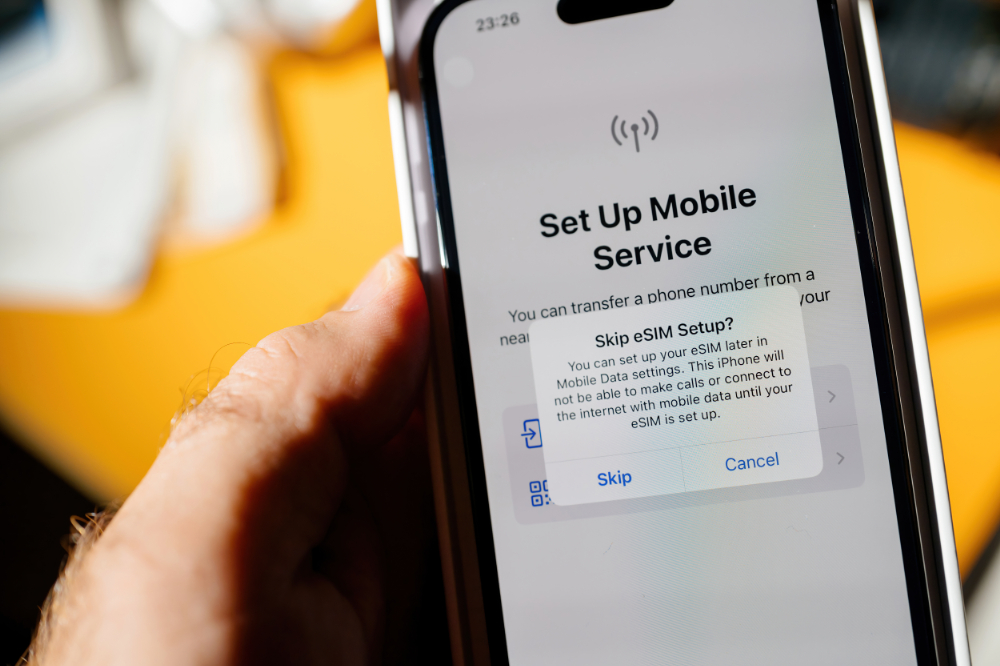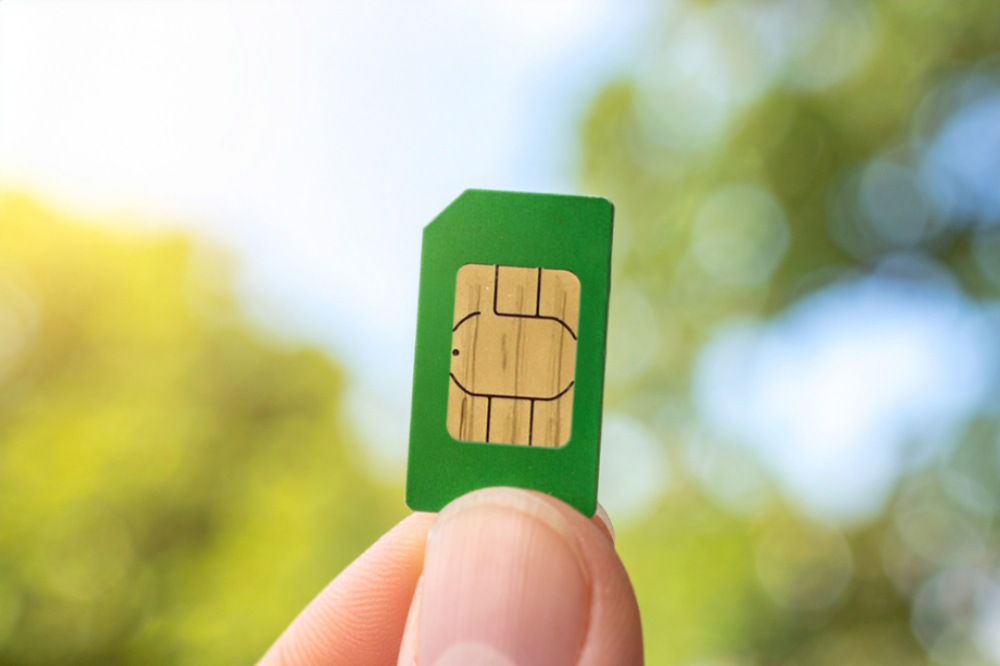.jpeg?width=999&height=667&name=1-1%20(4).jpeg)
Choosing eSIM vs Pocket WiFi: Your Best Connectivity Options in Japan
When planning a trip to Japan, staying connected is essential. Choosing between eSIM and Pocket WiFi can make a big difference in your travel experience. In this guide, we’ll compare both options to help you pick the right one for your needs.
Choosing Between Pocket WiFi and eSIM: A Quick Guide for Foreigner Travelers in Japan
Selecting the right connectivity option is key to a smooth trip in Japan. Whether you prefer the flexibility of a pocket WiFi or the convenience of an eSIM, finding a reliable provider like NINJA WiFi can enhance your travel experience with seamless and affordable internet access.
What are the Connectivity Options in Japan?
When traveling to Japan, staying connected is essential for navigating the country, accessing maps, and keeping in touch with family and friends. Japan offers several connectivity options tailored to different needs:
- 1.Pocket WiFi: Pocket WiFi devices, such as from NINJA WiFi, create a local wireless network using cellular service and are a popular option for tourists. They are readily available for rent at major airports or through online services. These devices provide internet access for multiple devices simultaneously and are easy to set up.
- 2.SIM and eSIM Cards: SIM and eSIM cards offer a practical solution if you prefer to use your mobile device. SIM cards require physical insertion into your device and provide access to local networks, while eSIMs are digital and do not require physical installation. Both options offer various plans depending on your data needs and the duration of your stay.
- 3.Hotels: Many hotels in Japan provide free internet access in guest rooms, typically through wireless networks or wired LAN connections. However, this is less common at traditional ryokan (Japanese inns), where you might find wireless internet only in public areas or computers available in the lobby.
- 4.Wireless (WiFi) Hotspots: Both paid and free WiFi hotspots are widespread across Japan. Free hotspots are available at international airports, major train stations, and various public spaces such as restaurants and convenience stores. For seamless access, apps like Japan WiFi Auto Connect simplify the registration process for multiple hotspots, while Free WiFi Passport offers easy access to SoftBank’s network.
- 5.Internet Cafes and Manga Cafes: For those needing temporary internet access, internet cafes, and manga cafes (comic book cafes) offer computers with internet access for hourly or overnight rates. These can be convenient for quick access but may be less user-friendly due to language barriers and sign-up requirements.
The Importance of Choosing the Right Option
Selecting the right connectivity option is crucial for a smooth and hassle-free experience in Japan. Here’s why making the right choice matters:
- ●Convenience: Pocket WiFi allows multiple devices to connect simultaneously and is portable, while eSIMs integrate directly into your device for seamless connectivity without extra hardware.
- ●Cost Efficiency: Free WiFi is cost-effective but can be unreliable; Pocket WiFi rentals and eSIM plans involve upfront costs but provide consistent and reliable internet.
- ●Coverage and Speed: Pocket WiFi generally offers a dedicated signal with better coverage and speed for multiple devices, whereas eSIMs depend on cellular networks and can be affected by network coverage.
- ●Ease of Use: Choosing a user-friendly option such as NINJA WiFi can save you time and frustration. Services with extensive English support are a must. Pocket WiFi requires managing an additional device, whereas eSIMs are integrated into your device, simplifying setup and reducing the need for extra equipment.
Considering these factors, you can select the connectivity option that best suits your needs, ensuring you stay connected throughout your journey in Japan.
Understanding eSIM vs Pocket Wifi Technology in Japan
Discover how eSIMs and Pocket WiFi work to keep you connected throughout your travels in Japan, and explore the unique benefits of each technology for a seamless internet experience.
How do eSIMs Work?
eSIM technology represents a significant advancement in how we connect to cellular networks. Unlike traditional SIM cards, which are physical pieces of hardware that need to be inserted into your device, an eSIM is embedded directly into your device's circuitry. This virtual SIM card allows for a more streamlined and flexible approach to mobile connectivity.
When you activate an eSIM, you’re essentially downloading a virtual profile that links your device to a cellular network. This process is initiated by scanning a QR code provided by your eSIM provider. Once activated, your device is ready to connect to the internet, make calls, and send messages, all without needing to handle a SIM card physically.
Benefits of Using eSIM in Japan
Using an eSIM in Japan offers numerous advantages:
- 1.Convenience: You can purchase and activate an eSIM online before you even arrive in Japan. Purchasing beforehand eliminates the need to search for a physical SIM card upon arrival and avoids the long queues often found at airports or local shops. Also, they are much easier to use since you don’t have to worry about configuring APN settings, as required when renting/purchasing a local SIM.
- 2.Cost-Effectiveness: eSIM plans often provide competitive pricing compared to traditional SIM cards and international roaming options. NINJA WiFi offers plans ranging from validity periods of 5-31 days and data restrictions from 5GB-100GB. You can find an option that fits your needs and budget.
- 3.Flexibility: eSIMs allow you to switch between different carriers and plans without the hassle of changing physical cards. The flexibility is particularly useful if you plan to travel to multiple destinations within Japan or even across other countries in Asia.
- 4.No Language Barriers: All eSIM activation and support processes are typically available in English, making it easier for non-Japanese speakers to manage their connectivity without facing language barriers.
- 5.Seamless Integration: With an eSIM, you don’t need to worry about losing or damaging a physical SIM card. The eSIM is integrated into your device, reducing the risk of connectivity issues and ensuring a smooth user experience throughout your trip.
How does Pocket WiFi Work?
Pocket WiFi devices have many different options and are portable routers that provide internet access on the go. They use a SIM card to connect to a cellular network, similar to a smartphone. This connection allows the device to access the internet through cellular data and then creates a localized WiFi network for your devices to connect to.
Once connected, the Pocket WiFi emits a WiFi signal that your devices, such as smartphones, tablets, or laptops, can join. The signal typically covers a radius of 30 to 50 feet, depending on the model and surroundings. Setting up a Pocket WiFi is easy: just power it on, find the network name (SSID) and password, and connect your devices as you would with any other WiFi network.
Getting started with NINJA WiFi is simple, thanks to its easy-to-use interface. Just power it on, follow the instructions, and you'll be connected within seconds.
Benefits of Using Pocket WiFi in Japan
Pocket WiFi offers several key benefits, particularly for travelers:
- 1.Multiple Device Connectivity: A single Pocket WiFi device can support multiple connections simultaneously. Multiple connectivity is especially beneficial for families or groups traveling together, allowing everyone to stay connected without needing individual SIM cards or data plans.
- 2.Extensive Coverage: Pocket WiFi devices are generally connected to extensive cellular networks, providing reliable coverage throughout most of Japan. Whether exploring bustling cities or venturing into rural areas, you will likely maintain a strong internet connection.
- 3.Compact and Portable: Pocket WiFi devices' small size and lightweight nature make them easy to carry. They can easily fit into a pocket or bag, providing internet access without the bulk of traditional routers.
- 4.Cost-Effective for Groups: When traveling with multiple people, a Pocket WiFi device can be more economical compared to buying individual SIM cards or relying on high roaming fees. It provides a shared internet solution at a lower cost.
- 5.Security and Convenience: Pocket WiFi devices are secured with passwords, ensuring that only those with the correct credentials can access the network. This added layer of security, combined with the convenience of having a single internet source, makes Pocket WiFi a practical choice for travelers.
Comparing eSIM vs Pocket WiFi in Japan: Choosing the Right Option for You
.jpeg?width=999&height=666&name=1-2%20(4).jpeg)
- When traveling in Japan, choosing between an eSIM and Pocket WiFi depends on your connectivity needs, budget, and travel style. This comparison will help you determine which option best suits your preferences for data speed, coverage, and convenience:
|
Factor |
eSIM |
Pocket WiFi |
|
Cost Comparison |
- Upfront costs can be higher compared to physical SIM cards. - Pricing is typically straightforward, with options for various data capacities. |
- Rental costs can be higher but often include data plans for multiple devices. - Economical for groups. |
|
Data Speed and Coverage |
- Reliable speeds in major cities. - Speeds may slow during peak hours or in rural areas. |
- Generally offers consistent speeds and robust coverage. - Better performance in remote areas. |
|
Short-Term or Long-Term? |
- Ideal for short-term stays. - Quick setup and activation without additional equipment. |
- Suitable for long-term stays. - Supports multiple devices and higher data limits. - Often provides better value for extended periods. |
|
Other Factors to Consider |
- Requires a device that supports eSIM technology. - Convenient with no physical SIM card. - Can be activated before arrival. |
- Requires return logistics. - Connects multiple devices. - Fewer compatibility issues. - Consider ease of setup and specific usage needs. |
Tips for Getting the Best Deal for eSIM and Pocket WiFi in Japan
.jpeg?width=1000&height=666&name=1-3%20(4).jpeg)
Choosing the right connectivity option for your trip to Japan can save you time and money. By carefully selecting between eSIM and Pocket WiFi and following these tips, you’ll ensure a seamless and cost-effective internet experience during your stay.
When it comes to acquiring eSIMs or Pocket WiFi in Japan, your options include:
- ●Airport Rentals: Most international airports in Japan have dedicated counters or booths for renting Pocket WiFi devices. While this option offers immediate access upon arrival, it often comes with higher rental fees and potential delays due to long queues or airport operating hours.
- ●Online Orders: Booking eSIMs or Pocket WiFi online before your trip can save you money and time. Many online providers offer competitive pricing and a variety of plans, often with the added convenience of picking up your device at a local post office or your accommodation.
NINJA WiFi offers flexible daily plans and various prices including 3GB for 770 yen, 5GB for 1,100 yen, and 10GB for 1,320 yen, with optional extras like a spare battery and insurance. Convenient airport rentals and pickups are available at ten major airports across Japan.
Conclusion
In conclusion, both eSIM and Pocket WiFi offer great connectivity solutions for travelers in Japan.
Whether you prioritize convenience, cost, or data needs, weighing the pros and cons of each option will help you make the best choice for your trip, and for those seeking a reliable pocket WiFi provider, NINJA WiFi offers a seamless experience with flexible pickup options across Japan.
Any upcoming travels to Japan? It’s never too late to register!
Are you interested in NINJA WiFi? Visit our detailed FAQ page for all the necessary information and useful insights!








